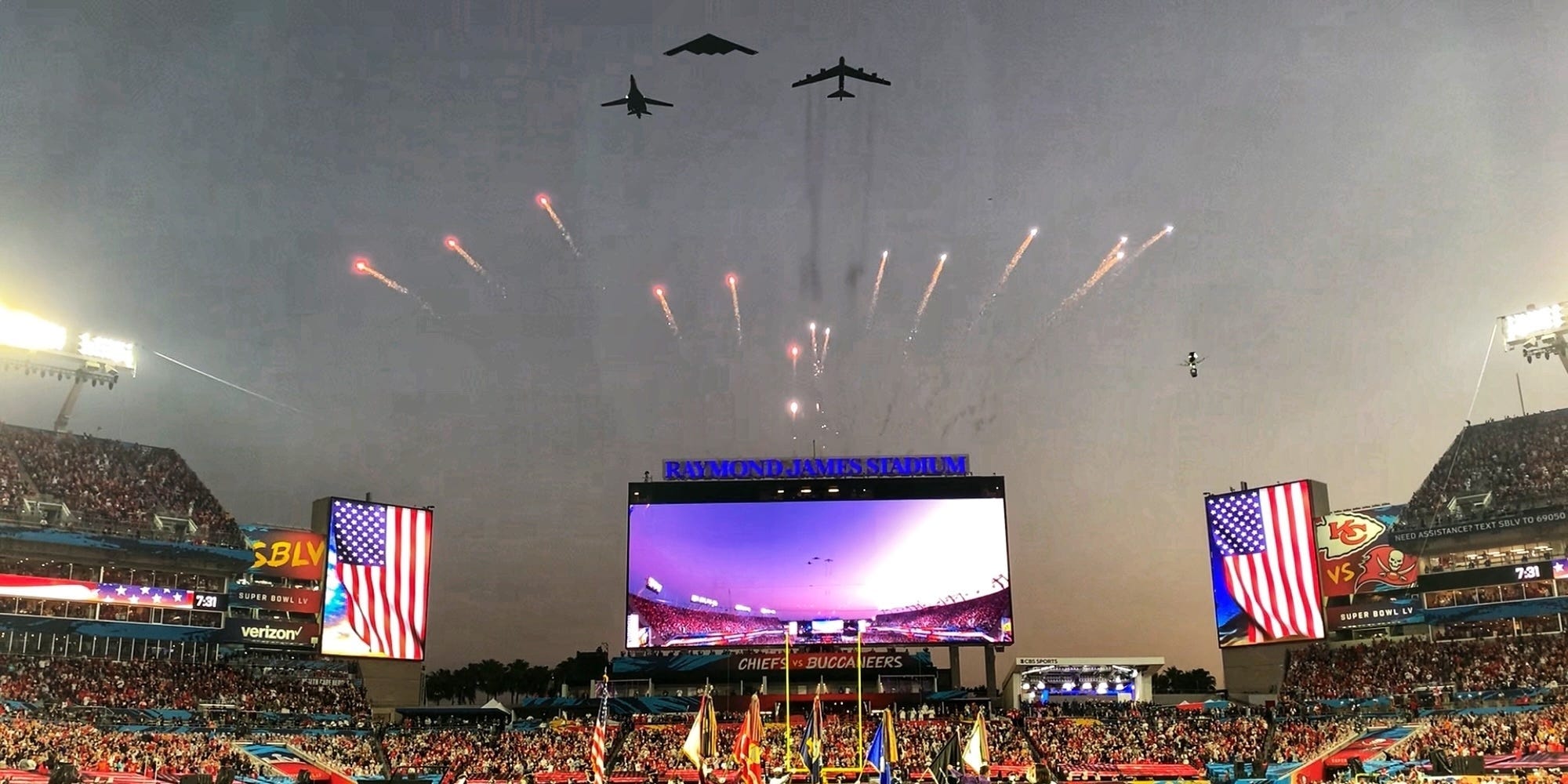
US Army/Maj. Stephen Von Jett
- Capt. Abraham Morland flew a B-1B over Super Bowl LV as part of a first-of-its-kind tri-bomber flyover.
- Morland, a B-1B instructor pilot, flew over Raymond James stadium in Tampa with a B-2 stealth bomber and a B-52.
- The flyover was actually four years in the making, and initial planning started nearly a year ago.
- Visit the Business section of Insider for more stories.
Super Bowl LV was dramatically different from previous Super Bowls, starting with the ambitious, technically precise bomber flyover that opened the game.
The smaller-than-usual crowd, capped at 22,000 because of COVID-19 restrictions, witnessed a dramatic, years-in-the-making three-bomber flyover thanks to hours of planning and practice by Capt. Abraham Morland and his teammates.
“This is the first flyover where we have all three Air Force bombers flying over a major sporting event,” Morland told Insider. “For me, it was symbolic because it was all of Global Strike Command, all of our bomber assets in the air at the same time flying together, which is a once-in-a-lifetime thing that I may never see again.”
Morland, a member of the 37th Bomb Squadron at Ellsworth Air Force Base in South Dakota, usually spends his days as a B-1B Lancer instructor pilot, flying a couple of times a week and practicing in a flight simulator.
“I was super excited to be picked for this once-in-a-lifetime opportunity,” Morland said.
Flying the B-1B
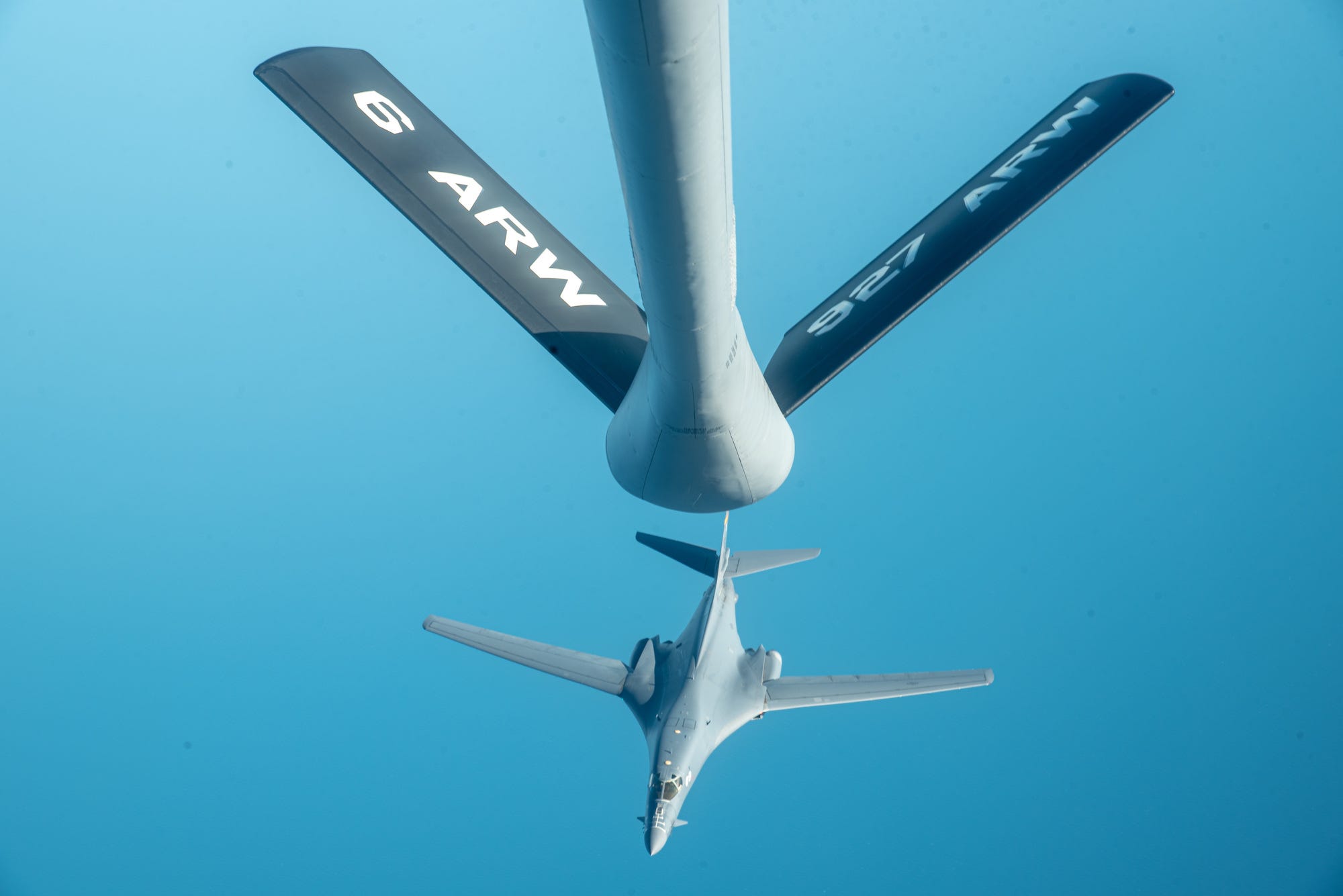
US Air Force/Staff Sgt. Matthew Matlock
Morland's father is an Air Force veteran who now works as a flight-simulator technician.
"Since I can remember, I've always wanted to fly," Morland told Insider. "My dad would take me to the simulators. He would let me fly the simulators. So from then, I just got the love and the bug of flying."
Morland got his pilot's license while participating in Angelo State University's ROTC program after enlisting in the Air Force Reserves in 2007. He got his wings at Sheppard Air Force Base in Texas and learned to fly the B-1B at Dyess Air Force Base before being stationed at Ellsworth.
"I went to pilot training at Sheppard, and the cool thing about Sheppard is it's the Euro-NATO joint pilot training" center, Morland said. "So they take all the fighter-pilot candidates from around NATO and they will come and train there."
The B-1B wasn't Morland's first choice - he initially thought he'd be flying fighter jets.
"After I started flying, I saw that the B-1 could maneuver like a fighter," he said. "It doesn't pull as many Gs as a fighter, but ... I really liked the idea of having other people on board, being able to just hang out with other people while you're working instead of just being by yourself."
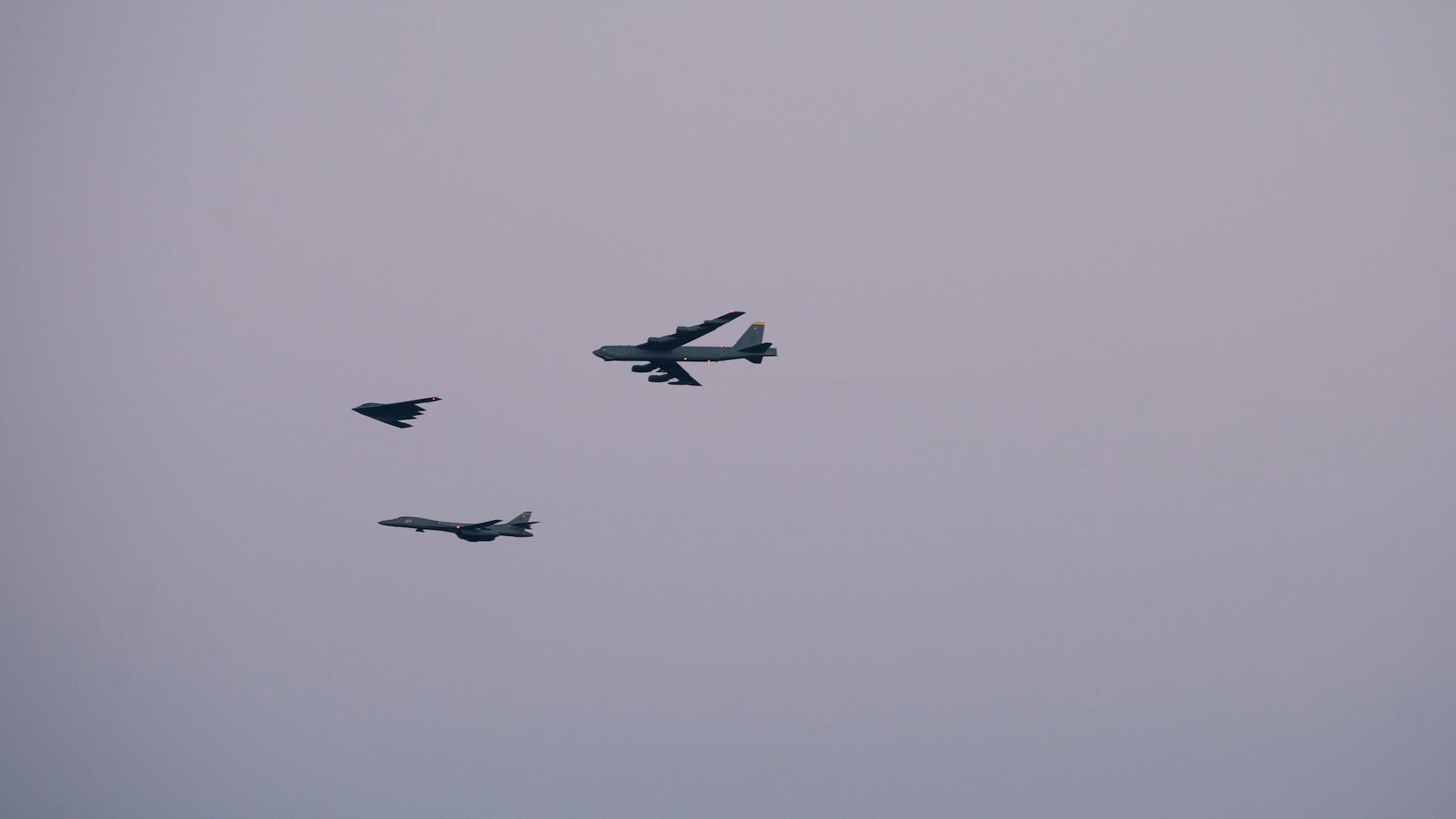
US Air Force/Senior Airman Shannon Bowman
The B-1B is a strategic heavy bomber designed during the Cold War. It can no longer carry nuclear weapons, but it can carry the largest payload of unguided and guided missiles, bombs, mines, and cluster munitions - up to 75,000 pounds of ordnance.
The B-1B still flies combat missions today but is being phased out in favor of the nuclear-capable B-21 Raider stealth bomber, built by Northrop Grumman for about $550 million each. The first of 17 B-1Bs to be retired in the coming months was flown to the Air Force's "boneyard" this month, and the remaining 45 will be retired by 2036.
The B-1B can also fly at supersonic speeds and, with aerial refueling, conduct extra-long sorties, like the 28-hour flight Morland made in April to fly with Japan's Air Force.
"It was actually a lot of fun," he told Insider. "The biggest thing is making sure you're getting on your sleep schedule a few days before, and then you're good to go."
The four crew members keep each other alert during the long mission, he said. "Some people use energy drinks. Some people chew on sunflower seeds to stay awake and stay alert - it's whatever you need to, just to make sure we get the mission done."
More than spectacle
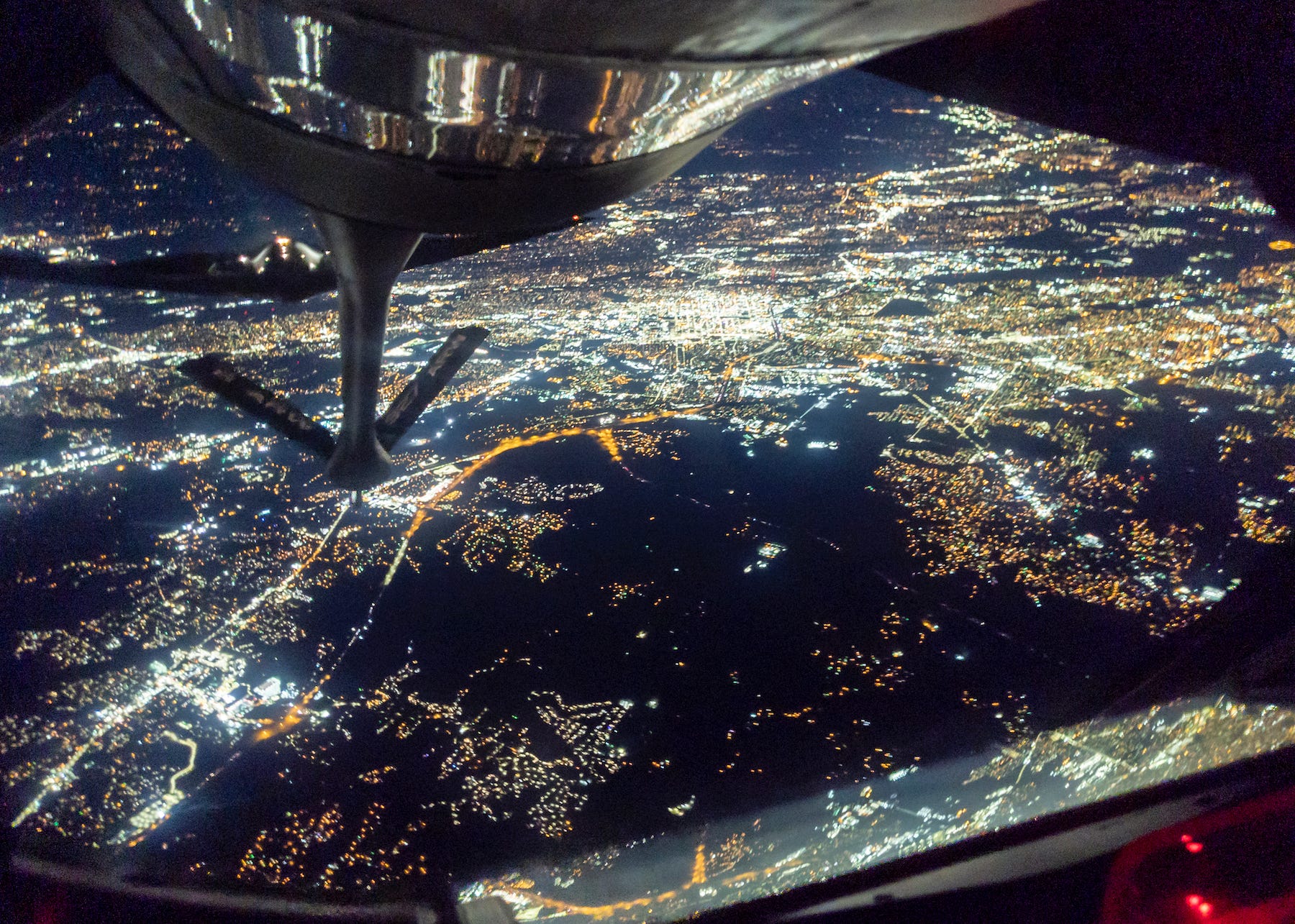
US Air Force/Airman 1st Class David McLoney
Morland's crew during the Super Bowl flyover comprised himself, another pilot, and two weapons officers. During a flyover of a civilian event, the weapons officers aren't managing missiles and targets; they're helping navigate and ensuring the flyover is timed correctly.
"Specifically for the Super Bowl, [the whole crew is] making sure that we meet up with the other aircraft on time and backing up the other aircraft to make sure we're going to fly across the stadium right on the note that we were supposed to," Morland said, referring to the moment during the national anthem when the bombers roared over the crowd.
The aircrews timed the overflight "perfectly," Morland said, crossing over the stadium as red and blue fireworks hit the sky behind them. The aircraft were also flying low and fast - up to 300 mph.
The flyover was actually four years in the making, and initial planning started nearly a year ago, according to the Air Force.
"Normally you're working with one unit who is used to doing these type of flyovers, so it was a new dynamic for us," Lt. Col. Chris McAlear, the trifecta's Super Bowl ground liaison, said in a press release. "Once we got the final aircrews selected and got the times from the NFL on when the national anthem would end, I put together a detailed event briefing for the three flying crews."
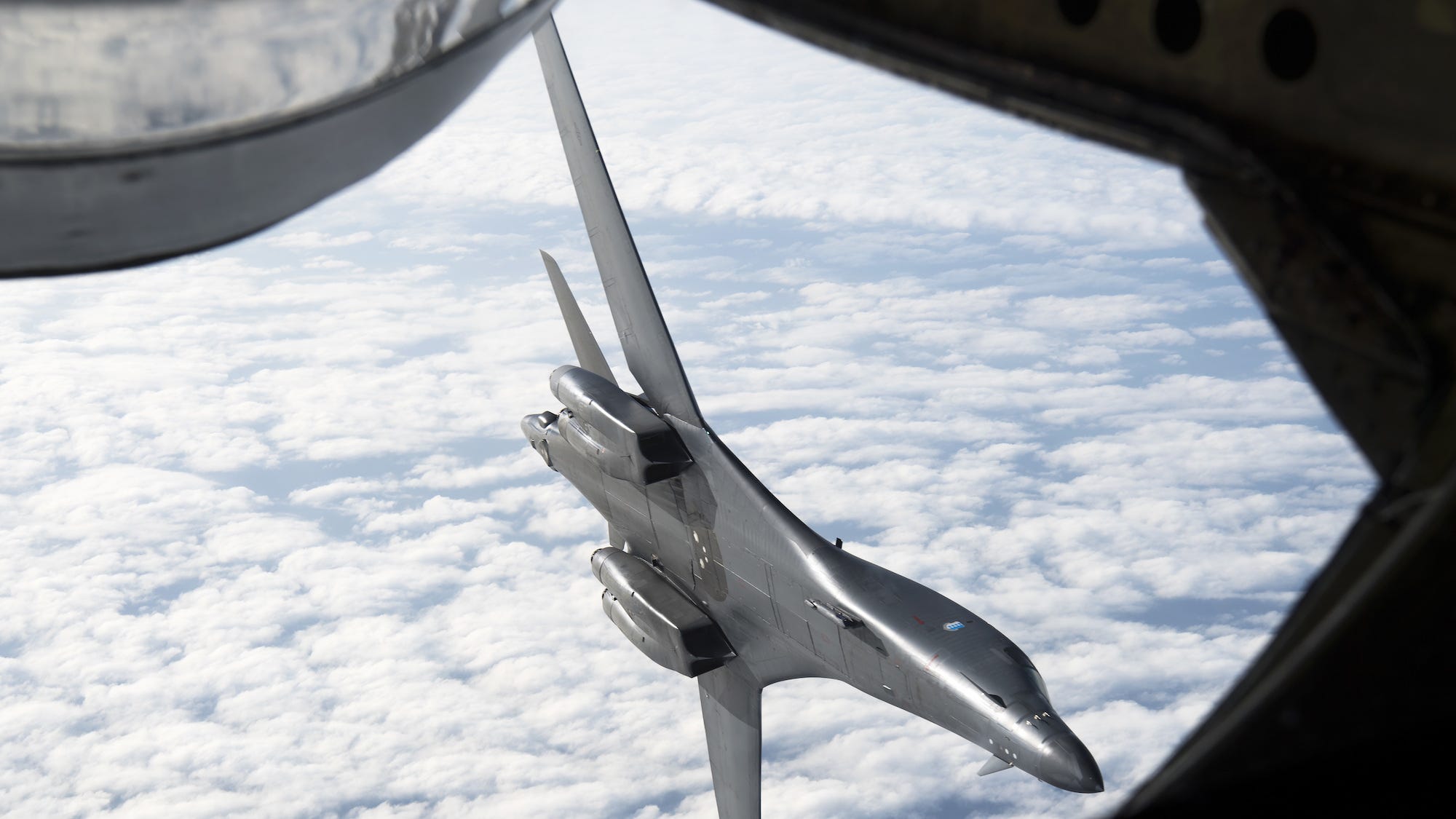
US Air Force/Senior Airman Ryan C. Grossklag
The Air Force also has to coordinate with the Federal Aviation Administration to make sure there are no air-traffic issues.
After months of planning, the three aircraft flew from their respective bases - the B-52 from Minot Air Force Base in North Dakota, the B-1 from Ellsworth, and the B-2 from Whiteman Air Force Base in Missouri, plus KC-1135 refueling tankers from MacDill Air Force Base in Florida - for a practice run early on game day.
"I've flown with the B-52s and the B-2s before, but not in that formation position," Morland said. "So we got that practice versus the normal practice, where we're a little further away."
"But since we had a tighter area that we needed to fly over, we had to be closer in order to make it be on time, first of all, and to make it fit and make it look like it did."
The three aircraft circled airspace just south of Tampa, waiting on McAlear to tell them it was time to fly.
Flyovers do serve an actual training purpose, Morland said.
"The best training we could get is actually flying to a different area of the country versus going to our local training area and knowing what is already up there. So it demonstrates, first of all, that we can take off from three different bases, meet up, and be where we need to be on time."
Flyovers are also a potent recruiting tool for the military, Morland added. The B-2 pilot flying next to Morland, Capt. Sarah Kociuba, has said a B-2 flyover she saw when she was 11 inspired her to join the Air Force.
